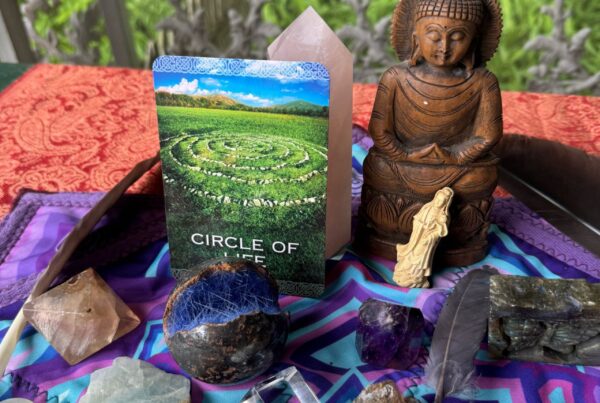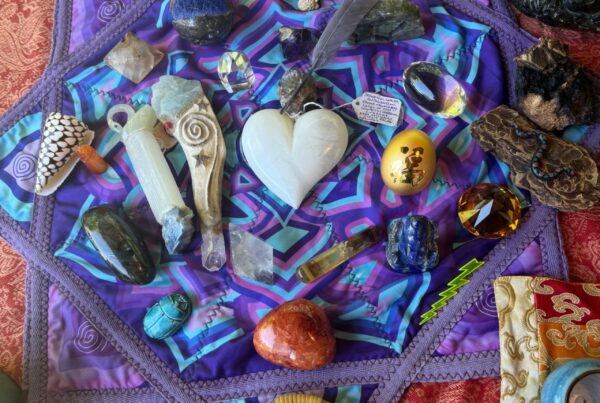I am a firm believer in landing fully in all feelings and not transcending them prematurely. We are taught from a very young age which emotions are preferable and which ones are not. Emotions and thoughts about feelings are categorized into two camps; there are bad ones and good ones, and the good ones are reinforced positively by society. Anger – bad. Peaceful – good. Sad – bad. Happy – good. Entitled -bad. Thankful -good. And so on.
You know what I mean because marketers manipulate your feelings and thoughts constantly around these concepts. You know what feelings you have been rewarded for and which ones you have been chastised for having. You know when you express something like pain or despair, honestly, how quickly people reframe your feelings for you, dismissing what you say you are feeling, and pushing, before you are ready, to a more acceptable feeling. You may even do that to others yourself. So why bother being transparent when the “bad” feelings will be shut down pretty quickly?
We are simply not encouraged to feel hopeless, or frustrated or sorry for ourselves. Why? Because those kinds of feelings may make us and those around us feel uncomfortable, and oh dear, we don’t want to be uncomfortable. The “bad’ feelings go underground, are repressed and hidden until they are given an opportunity to emerge en masse and acted out big time, in ways that can actually cause real harm. We are living in those kinds of times right now.
Feelings or emotions, in and of themselves, do not cause real harm. They are merely what arises naturally in us as human beings. When they are allowed to be expressed in a safe and creative way, they move through us like the wind. It is when they are shut down in us (as they organically appear) that they linger and gain steam and either explode out of us or create disease within us.
A wonderful process painting teacher I studied with, Michelle Cassou, says, “Paint the forbidden!” It is so fun when we really allow ourselves to do that. We feel better afterwards. We are given permission to do and embrace the unacceptable.
If you have ever used a Zen board where you dip your brush in water and paint on it and watch the image or water strokes transform and then disappear, you will know what I mean. You paint any feeling; it changes shape as the water dries and then it dissolves into nothingness. What is left is a clean slate, an empty state in which you just feel better. But it can’t transform until it is acknowledged and expressed.
I have clients who don’t believe they are allowed to express anger in any way; it is just wrong. But it is felt secretly, nonetheless. And then it comes out sideways…or they get sick. I give them a drum and invite their hands to speak by moving the anger or frustration toward an empty chair and what a surprising relief follows. Throwing water balloons at a brick wall while feeling through rage usually concludes in laughter and even joy. The “bad” and the “good” are linked, two sides of the same coin. Finding a safe and creative way to express the “bad” very often leads us directly to the “good” and then we realize there is no bad or good thoughts or feelings in the first place.
Some workshops are given on the topic of Forgiveness, intentionally encouraging the participants to forgive, before they are ready to. Of course, forgiveness is a powerful destination to aspire towards but we must go on an authentic journey to arrive there. Letting go, and Surrender also have great value when doing so will relieve our suffering, but both must be arrived at when we have readied ourselves fully. Everything else we do is really pretending and no real shift takes place.
Gratitude is the same. It is heart-warming and perspective-enhancing to have a gratitude journal, no doubt here. But it is also helpful to have a “pissed off” journal as well. I remember one year giving a Gratitude workshop before Thanksgiving and one of the beginning activities was to sit across from a partner and empty out all the things that the participant didn’t feel grateful for.
Some people were horrified. This was not “evolved.” But, once they fully engaged with the activity, they began to feel lighter. Their listening partner was committed to remaining neutral, not agreeing or disagreeing. Just being present with their partner’s discontent. They were creating space for Gratitude to emerge authentically. Many participants had never been given permission to let it out in this kind of a safe learning setting, where their partner just listened non-judgmentally.
Acknowledging our resentments and discontentment, without editing, can often lead us to a deeper gratitude, and it comes organically, when we are ready to turn towards genuine thankfulness.
I use a “talking stick” when working with couples or families. This stick is what is used in some indigenous cultures for important meetings. The person holding the stick has the undivided attention of all concerned. No interruptions are allowed. Even if you disagree with the person holding the stick, and may even be feeling defensive, you must sit in the defensiveness without uttering a word. You must be fully present with the stick holder’s truth.
Very often, little by little, a glimpse of empathy will emerge toward the speaker who holds the talking stick, in your own heart and the hearts of the other listeners. The unspoken is allowed to be spoken in a safe way. You will also have your turn to hold the stick, to speak your unspoken. After all the “problems” have been named and vented, heard merely as feelings and perceptions, I might invite the participants to imagine what it is like to feel as the other speakers have felt, to sit in their place, and the volume of empathy appears to intensify.
Finally, we shift the experiment, as everybody has been heard in this safe container, and now the stick is used to express eveOnn just one word of appreciation toward each of the others. Sometimes this is very hard to do, but once appreciation has been invited in, it surprisingly leads to a deeper feeling: authentic gratitude.
We can begin to see more clearly what is worth being grateful for, because we experience the joy that accompanies gratitude, in contrast to the agitated feelings of ingratitude and entitlement. Our gratitude experience is fuller and warmer. Nothing has been repressed or dismissed, and we can turn our attention more genuinely in the direction of appreciation and the richness of Thanksgiving.








Very important understanding of gratitude and of letting all your feelings live within you